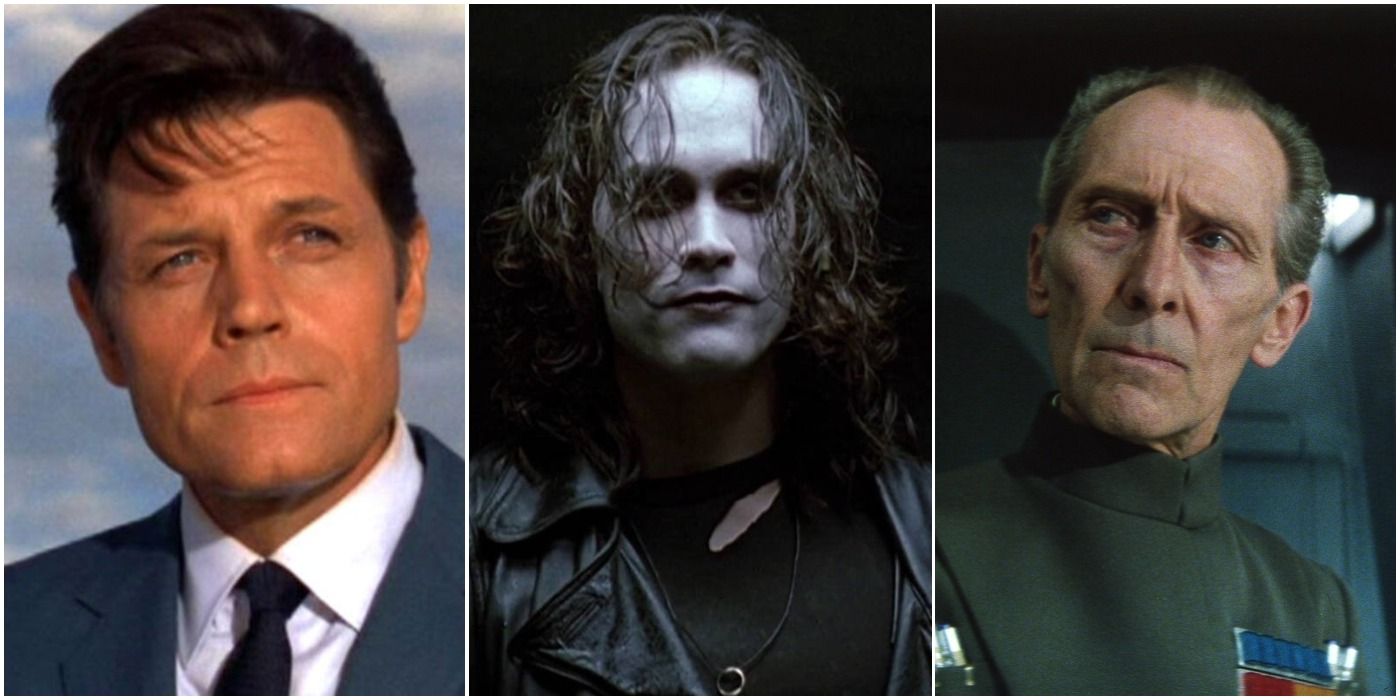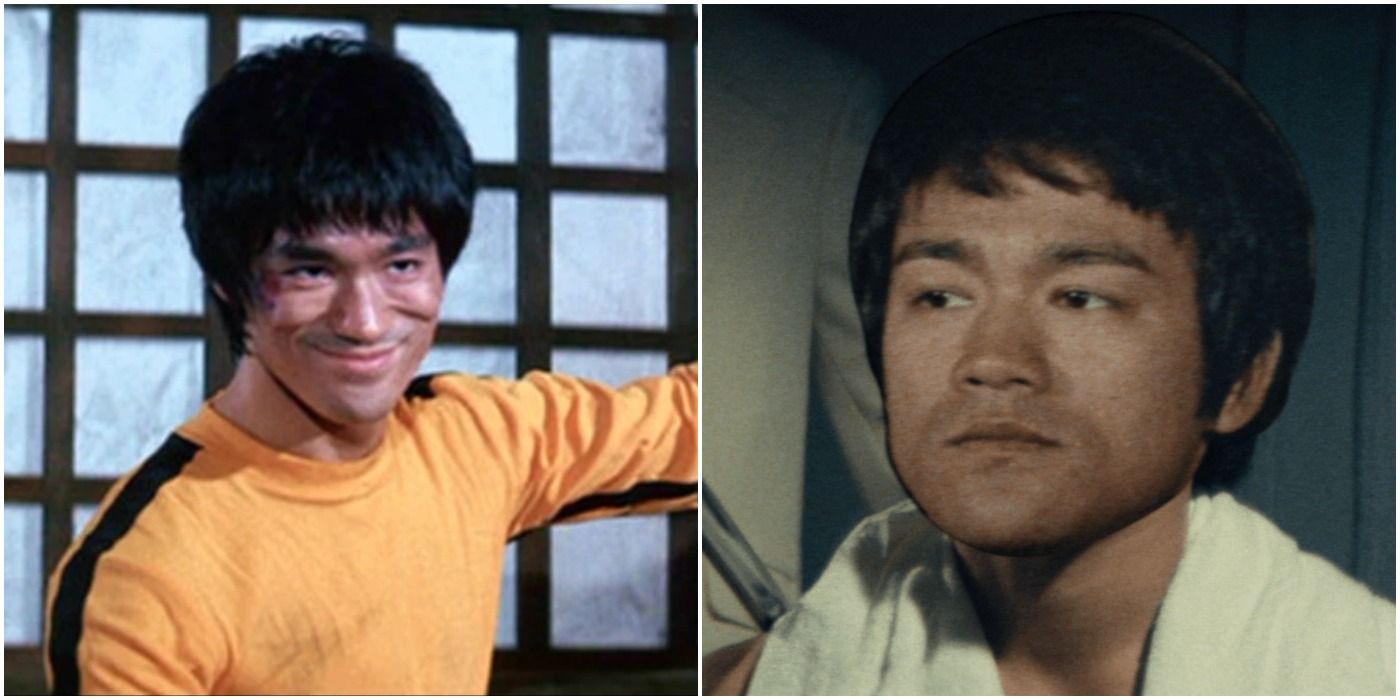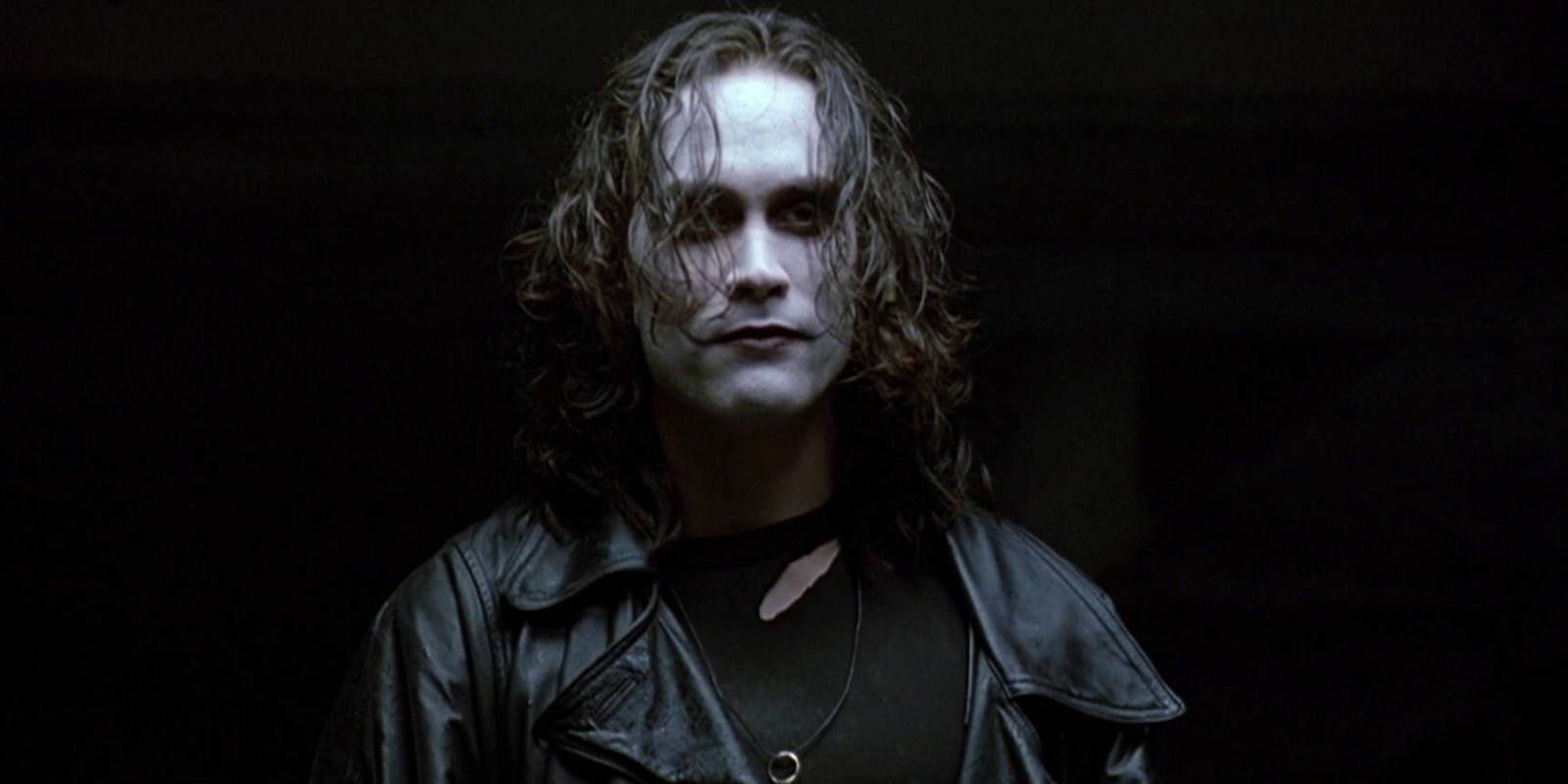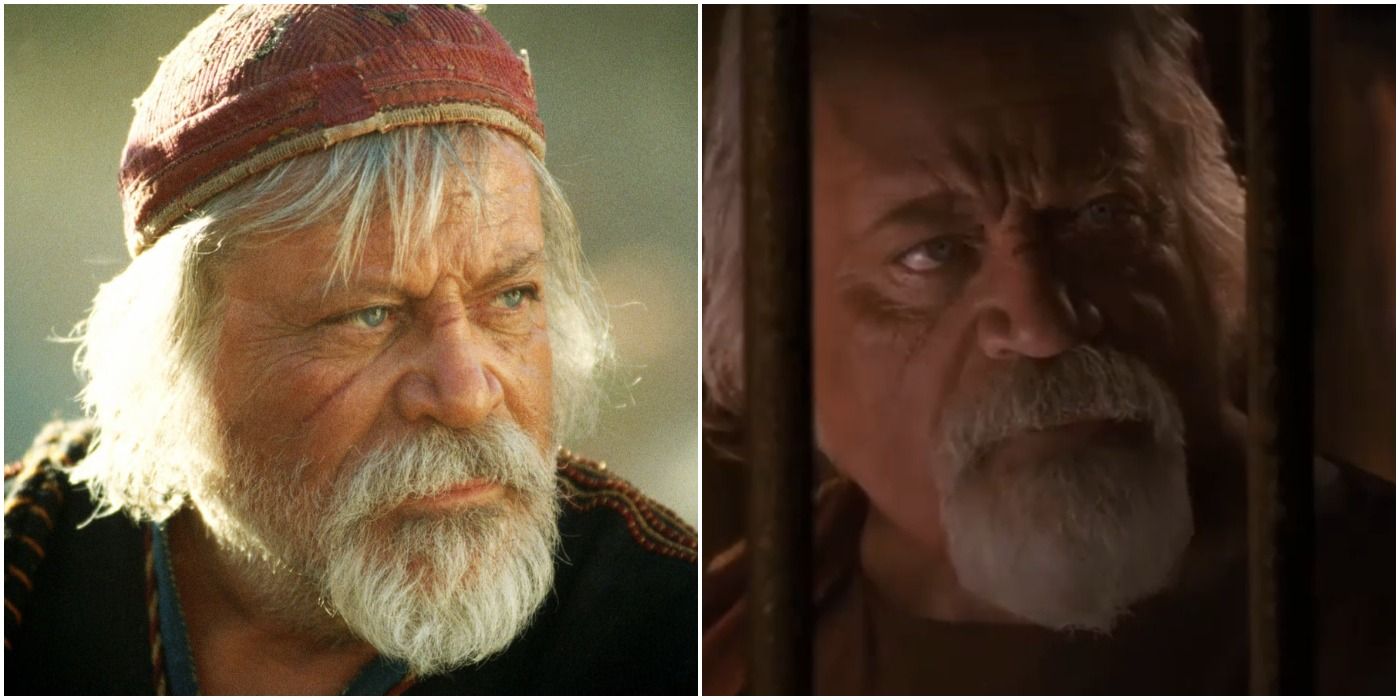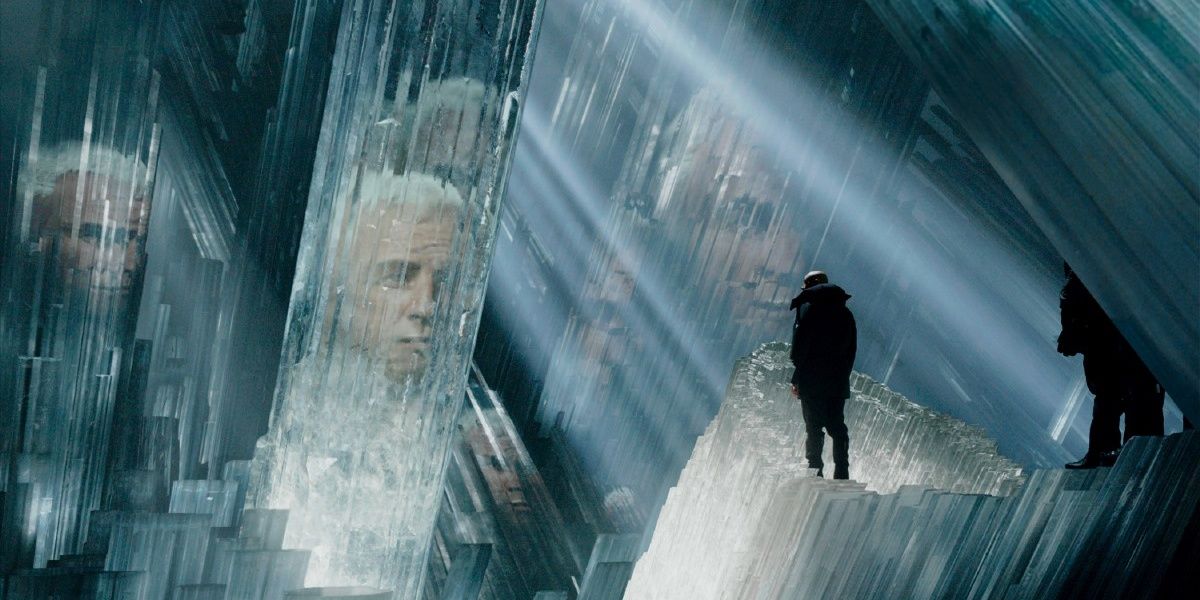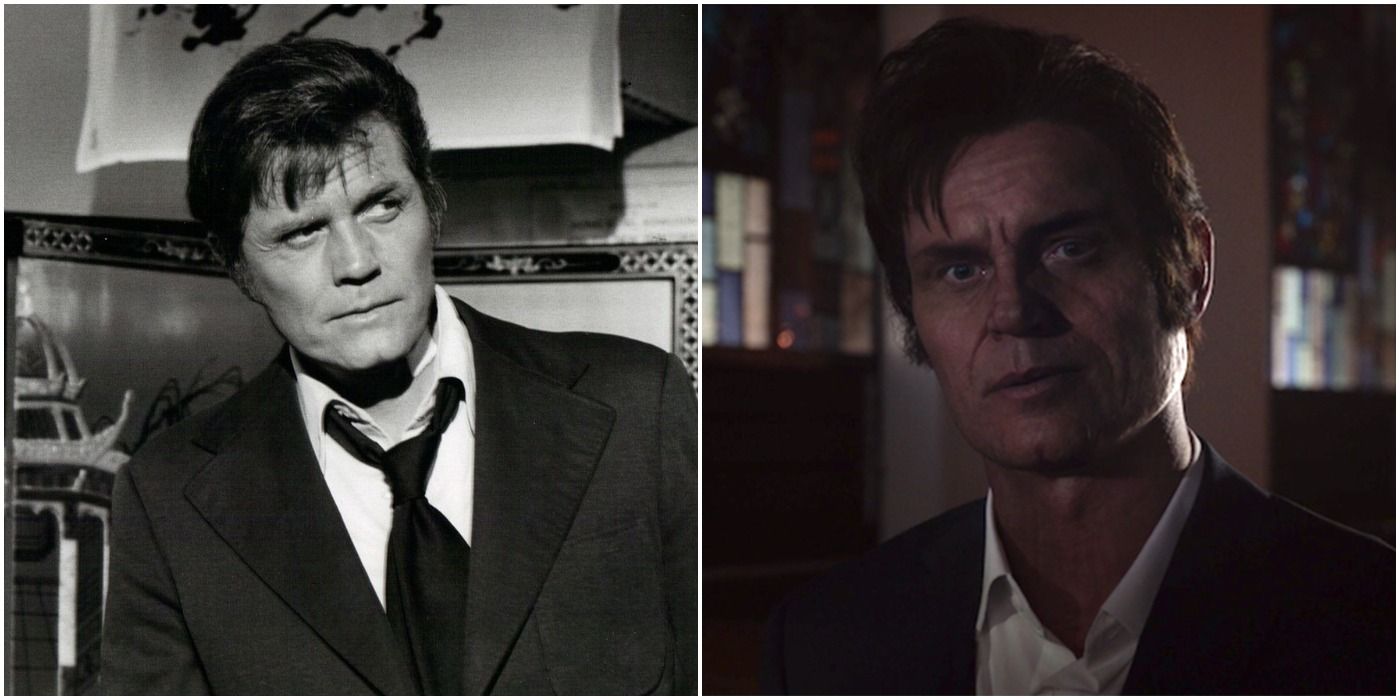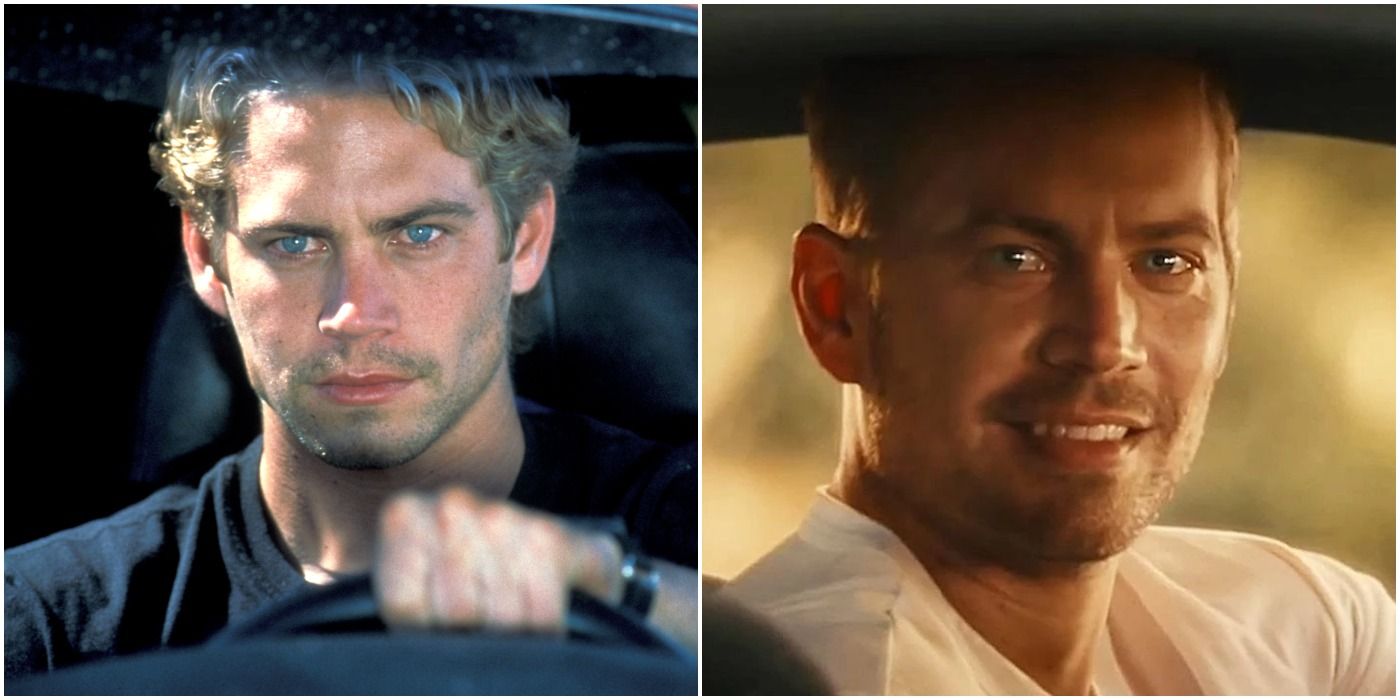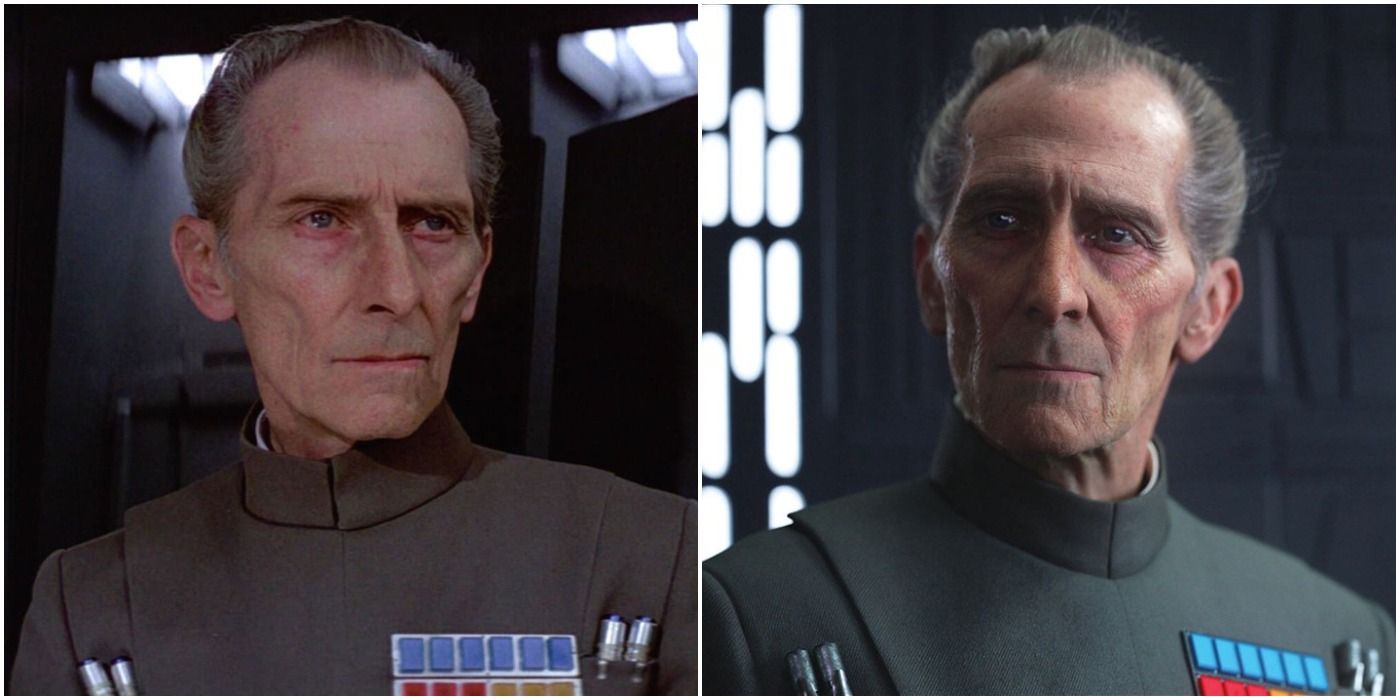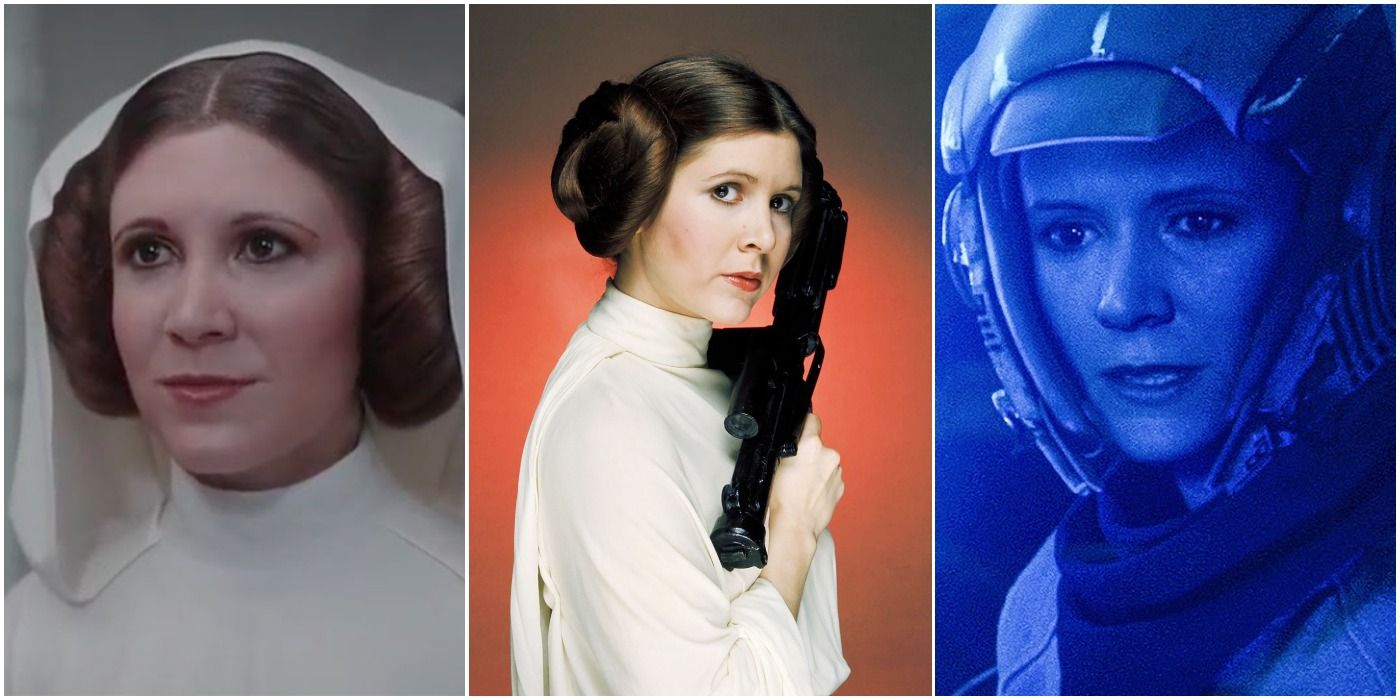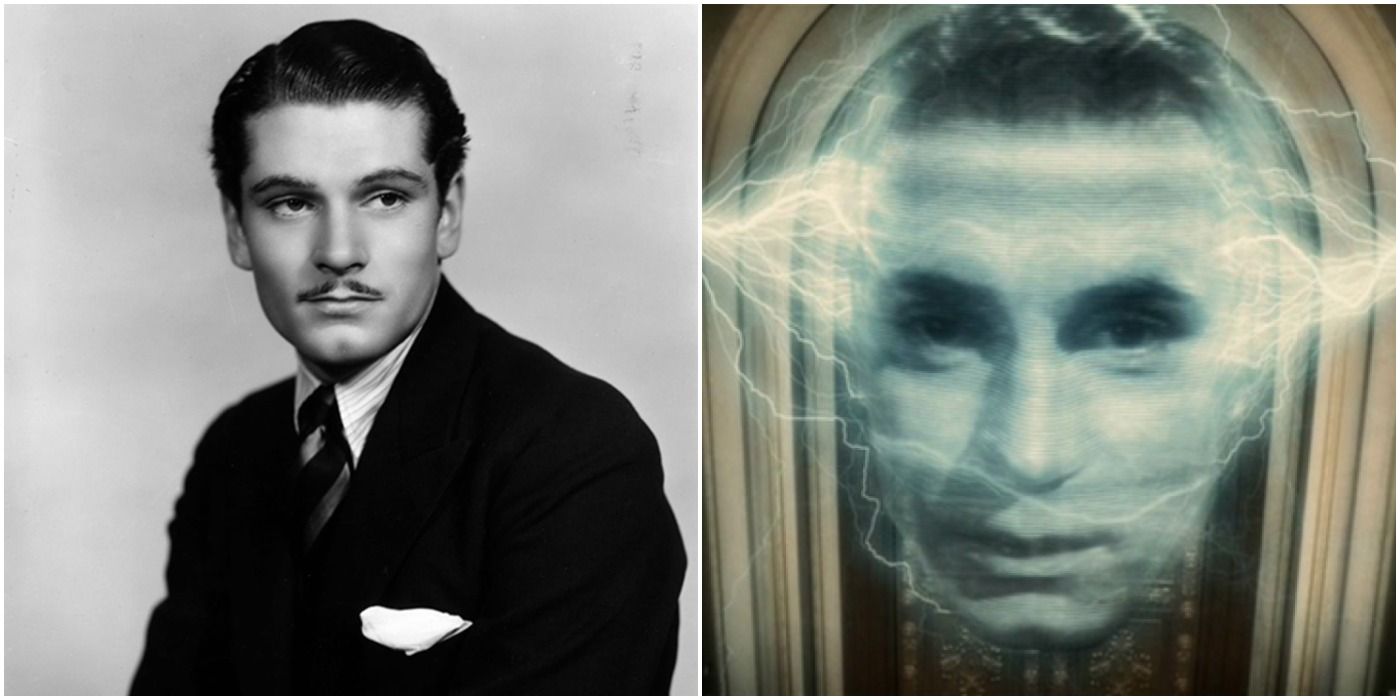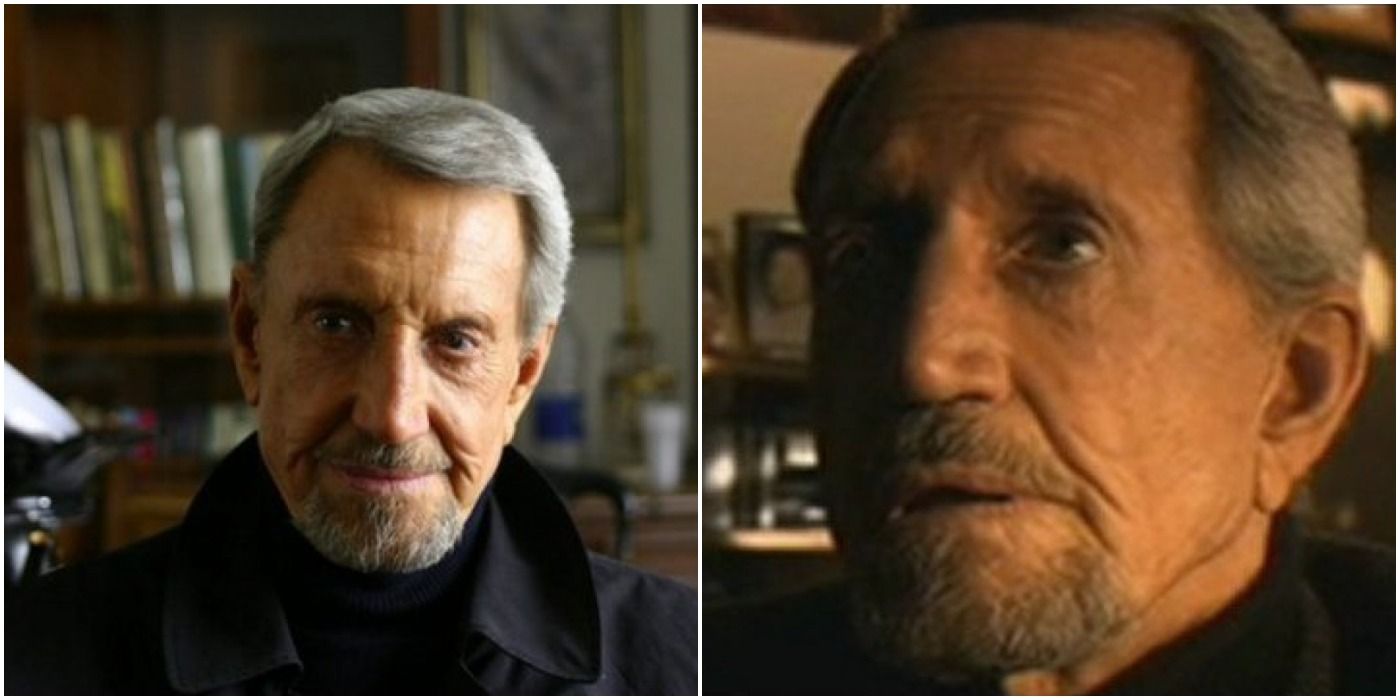Modern movie magic is a wonderful thing. With the advancements in computer-generated imagery, filmmakers can practically put anything they imagine to the screen. Numerous creators have taken advantage of this (for better or worse), bringing fantastical creatures and vast worlds to life in ways audiences never dreamed of. They've even used this technology to substitute people.
Sometimes, when an actor has passed away prior to completing a project, the visual effects team has picked up the slack. In some cases, audiences can't help but wonder, "Why bother?" On other occasions, though this is necessary to finish things up due to the work that has gone in, and to pay homage to the late actor.
10 Bruce Lee – Game Of Death
The earliest example appropriately involves one of history's biggest cinematic icons. At the tender age of 32, Bruce Lee mysteriously passed away due to cerebral edema. Prior to his passing, he conceived Game of Death as a passion project to showcase his personalized martial arts style. His death cut that vision short, and much of the footage that he'd previously shot was lost, leaving little to work with.
On top of extensive rewrites, unconvincing body doubles, and editing tricks, the finished product used rudimentary computer techniques to bring Bruce back to the big screen. Namely, the filmmakers pasted a picture of Lee's head onto someone else's body. Surprise, surprise — it looks laughably fake. This was the early 1970s, after all.
9 Brandon Lee – The Crow
Sadly, a curse seems to befall the Lee family. While filming the fantasy action flick The Crow, Bruce's son, Brandon, was accidentally killed by a prop gun. However, this Lee's loss was less noticeable in the final product.
Not only did the body doubles and more advanced CGI sell the illusion, but the seams were further hidden by the film's stylistic direction, dark aesthetic, and extensive makeup. Additionally, the actor had already finished most of his scenes before his passing. The filmmakers had fewer holes to fill in, leading to one of the most convincing digi-doubles in screen history.
8 Oliver Reed – Gladiator
Next to Richard Harris, Oliver Reed was easily the most famous name attached to Ridley Scott's Gladiator. He played Antonius Proximo, the scowling trainer for Roman gladiator hopefuls, and he thankfully shot most of his scenes. Unfortunately, a heart attack claimed his life before he could finish.
For the last few moments of screen time, filmmakers crafted a digital composite of Reed's face from old footage and placed it on a body double. This allowed the actor to posthumously appear in two more scenes. Thanks to the detail and the shadows covering any shortcomings, the effect remains an impressive sight to this day.
7 Marlon Brando – Superman Returns
This Superman film strives to be a successor to Richard Donner's original duology. The music, aesthetic, heroic reverence, and occasional corniness all point to those classics. While Christopher Reeve himself sadly can't come back, Marlon Brando's Jor-El does make a cameo.
A simulation of Superman's father appears at the Fortress of Solitude, much like the previous films. Utilizing old footage and computer compositing, filmmakers project Brando's image onto the vast crystal structure. The finished product is extremely convincing. While some of that is because the image is partially obscured, the success mainly comes down to the solid work of the VFX artists. It's like Jor-El really came back in some form to impart his wisdom. Life imitates art.
6 Jack Lord – Hawaii Five-0
The original Hawaii Five-0 was among the most popular cop shows in TV history, partially due to the charisma of star Jack Lord. When CBS remade the series in 2010, Jack Lord had already passed away from heart failure in 1998. He couldn't return as protagonist Steve McGarrett or any other character. This made his eventual cameo all the more surprising.
Well into the new show's run, Alex O'Loughlin's McGarrett contemplates his future as a cop, and a mysterious man appears and gives him a pep talk. Craft a digital composite of Lord from his final season, and the two 5-0 leaders are miraculously speaking. The former star's face looks a bit too animated, but it's textured and expressive enough to get the job done, especially in the shadowy church setting. Plus, it'd be tough to find anything better on a TV budget.
5 Paul Walker – Furious 7
Much of Walker's career was defined by his lead role in the Fast and Furious franchise. This made it tragically ironic that a car crash claimed his life partway through filming the seventh entry.
To get around this unfortunate accident, filmmakers used a variety of techniques. They set to work combing through existing footage, from both films and interviews, to rebuild Walker's likeness for a body double. In conjunction, the FX team also used Walker's brothers as reference points. This mishmash adds up to a realistic whole, providing a sendoff that satisfied longtime fans.
4 Peter Cushing – Rogue One: A Star Wars Story
The first Star Wars spinoff from Disney takes place shortly before the original classic. As such, the filmmakers saw fit to bring back certain characters to strengthen the continuity. The most prominent of these is Grand Moff Tarkin. The character has previously appeared in the animated TV shows, but this film showcased a photorealistic recreation of Peter Cushing, who passed away in 1994, next to live-action actors.
Rome actor Guy Henrie donned motion-capture tech to portray the Imperial commander on set. FX artists then used facial molds of Cushing to paste his image onto Henrie's head. The result is remarkably detailed, yet oddly unsettling. The dead eyes and lack of movement only cement how plastic this new Tarkin looks.
3 Carrie Fisher – Rogue One: A Star Wars Story & Star Wars: The Rise Of Skywalker
The second digitized Rogue One star was Princess Leia herself. At the end, the heroes beam the Death Star plans to the rebel leader, who promptly turns to the camera and proclaims her hope for the future. Unfortunately, FX artists clearly didn't spend as much time on this as they did with Tarkin. Carrie Fisher died from cardiac arrest right around the film's release, so it's hard to look at this porcelain doll without cringing.
A few years later, computers brought the late actress back once again for a mainline entry. The Rise of Skywalker not only used Force Awakens footage to insert the elderly Leia into the tale, but a flashback reveals a younger Leia training as a Jedi. As before, though, the effect is unfortunately poorly done.
2 Laurence Olivier – Sky Captain And The World Of Tomorrow
Many aspects of this dieselpunk flick are suitably retro, as the entire tale is a throwback to swashbuckling adventures of years past. This likely fueled the decision to bring back one of the great stars of the genre. Laurence Olivier definitely had the classical swagger for the enigmatic mad scientist unveiled at the film's conclusion. The only problem was that he'd been dead for fifteen years, having passed away from kidney failure in 1989.
To achieve this cameo, the creators used archived BBC footage to craft a digital composite of Olivier's face. He's a floating electrical head, so it'd be difficult to gauge how convincing he could conceivably be. However, actors typically aren't using their full expressive repertoire during interviews. As such, Olivier's posthumous performance here feels somewhat stiff.
1 Roy Scheider – Iron Cross
For his last film, the Jaws star harkened back to the tough guy roles of his early career, playing a Nazi-hunting cop at the end of his rope. While Scheider finished most of his scenes, complications from a staph infection prevented him from shooting the final few bits.
This time, the filmmakers used a mix of practical and digital effects. They constructed a latex mask of Scheider's chiseled features and placed it on body double. Touching it up with CGI allowed audiences to see the actor one last time. It's a fairly seamless job, likely because digital technology doesn't do all of the heavy lifting. Scheider's face is physically in front of the camera; all the FX guys have to do is enhance it.

